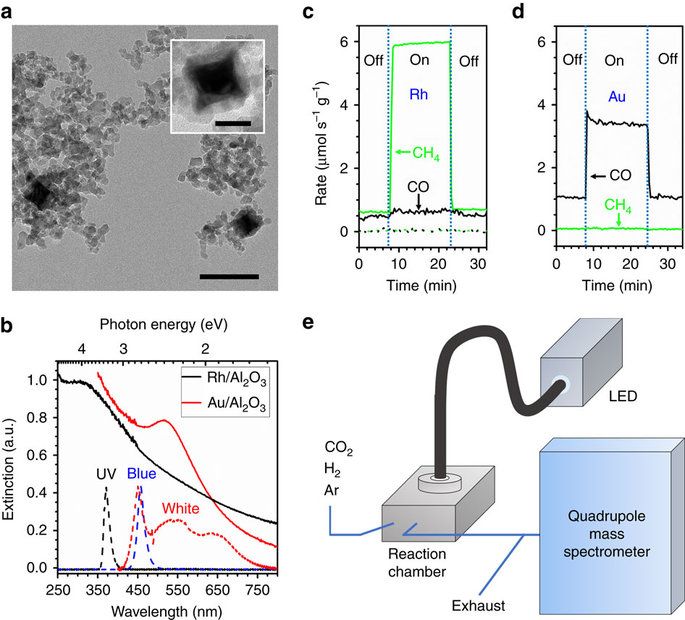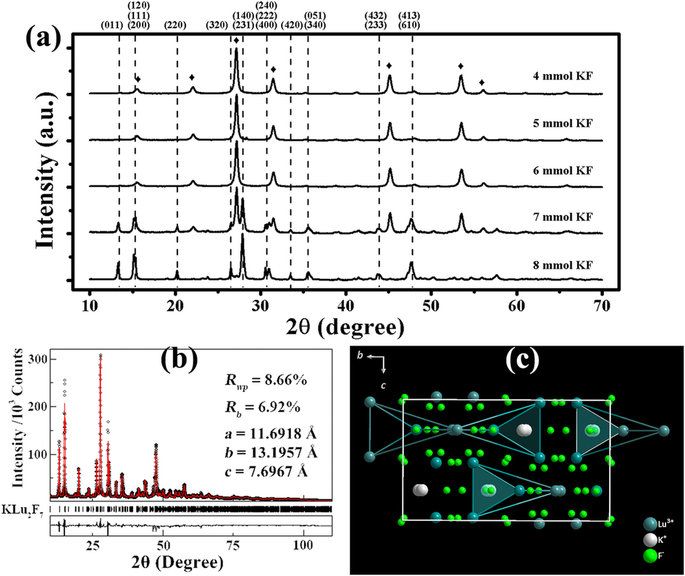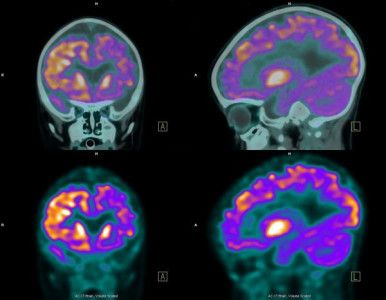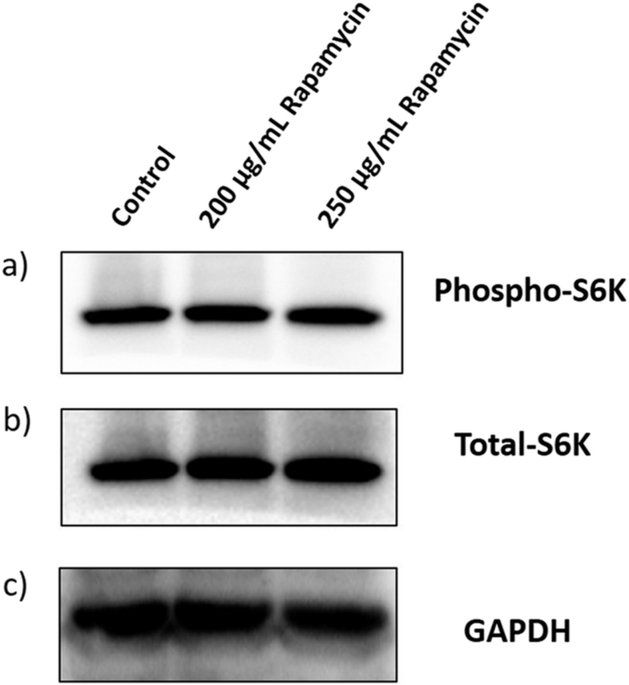Page 10506
Feb 23, 2017
Product selectivity in plasmonic photocatalysis for carbon dioxide hydrogenation
Posted by Karen Hurst in category: nanotechnology
Nice development — demonstrating that light can control product selectivity in complex chemical reactions can be performed reliably.
Atmospheric CO2 can be transformed into valuable hydrocarbons by reaction with H2, but CO is the favoured kinetic product. Here, Liu and co-workers show that plasmonic rhodium nanoparticles not only reduce the activation energy for CO2hydrogenation, but also photo-selectively produce methane.
Feb 23, 2017
Lanthanide-Doped KLu2F7 Nanoparticles with High Upconversion Luminescence Performance: A Comparative Study
Posted by Karen Hurst in categories: energy, nanotechnology
Nice find on nanoparticles and energy transfer — important in scalable devices, energy conservation, etc.
The development, design and the performance evaluation of rare-earth doped host materials is important for further optical investigation and industrial applications. Herein, we successfully fabricate KLu2F7 upconversion nanoparticles (UCNPs) through hydrothermal synthesis by controlling the fluorine-to-lanthanide-ion molar ratio. The structural and morphological results show that the samples are orthorhombic-phase hexagonal-prisms UCNPs, with average side length of 80 nm and average thickness of 110 nm. The reaction time dependent crystal growth experiment suggests that the phase transformation is a thermo-dynamical process and the increasing F−/Ln3+ ratio favors the formation of the thermo-dynamical stable phase — orthorhombic KLu2F7 structure. The upconversion luminescence (UCL) spectra display that the orthorhombic KLu2F7:Yb/Er UCNPs present stronger UCL as much as 280-fold than their cubic counterparts. The UCNPS also display better UCL performance compared with the popular hexagonal-phase NaREF4 (RE = Y, Gd). Our mechanistic investigation, including Judd-Ofelt analysis and time decay behaviors, suggests that the lanthanide tetrad clusters structure at sublattice level accounts for the saturated luminescence and highly efficient UCL in KLu2F7:Yb/Er UCNPs. Our research demonstrates that the orthorhombic KLu2F7 is a promising host material for UCL and can find potential applications in lasing, photovoltaics and biolabeling techniques.
Feb 23, 2017
Single atom feels the quantum heat
Posted by Karen Hurst in categories: particle physics, quantum physics
Be discrete —
Single atom feels the quantum heat
Gold climbs a thermal staircase, platinum climbs a thermal hill.
Feb 23, 2017
A diamond-based magnetic resonance microscope could reveal the secrets of human biochemistry
Posted by Karen Hurst in categories: chemistry, computing, quantum physics
I told a few CEOs and Boards a few years ago that Syn-diamonds would be critical to Quantum Computing (processing, storage, networking & communications), energy, etc. Well, more proof in imaging and sensors found in these one time worthless imitations.
With a sensor made from diamond, the new microscope can study biochemical processes in unprecedented detail.
Feb 23, 2017
Recent Harvard Study Reveals Old People Retain Youthful Brain Functions
Posted by Karen Hurst in category: neuroscience

Ha! Take that Mark Zuckerberg! (the CEO who said anyone older than 29 years old is not sharp enough for FB)
A recent research revealed that some old people have brain functions fifty years younger than their physical age.
Continue reading “Recent Harvard Study Reveals Old People Retain Youthful Brain Functions” »
Feb 23, 2017
Creativity linked by study to left brain and right brain connections
Posted by Karen Hurst in categories: innovation, neuroscience
Alright my neuro research & deep-mind learning friends out their; you may wish to read this find; especially as we continue our mapping and mimicking brain functions in systems as well as look at brain enhancement technologies as this is good to know as we try to boost innovation via technologies.
The most creative individuals have more nerve connections between the right and left sides of their brains, reveal researchers in the United States who analyzed connections in 68 different brain regions.
Long believed to be key in fostering imagination and intuition, as well as artistic awareness, and visual and auditive approaches, the right hemisphere isn’t the only part of the brain with a role to play in determining creativity, according to new research from Duke University.
Continue reading “Creativity linked by study to left brain and right brain connections” »
Feb 23, 2017
KFC menu found to be loaded with MSG “excitotoxins” that can damage neurology
Posted by Karen Hurst in categories: food, health
(Natural News) KFC makes much of its “secret blend of herbs and spices,” but there’s a much simpler reason that people tend to find the flavor of the restaurant’s chicken so striking and find themselves craving more: All KFC chicken is literally marinated in MSG.
MSG, or monosodium glutamate, is an artificial salt designed to activate the “umami” taste receptors on the tongue that give food a full, savory flavor. Unlike naturally occurring glutamate, which is an amino acid found in foods such as anchovies, tomato paste, soy sauce, Worcestershire sauce and parmesan cheese, MSG has been connected with various health problems, with some individuals more sensitive than others.
Some of the dangers of MSG might stem from the fact that it is a highly concentrated form of glutamate, which is not only an amino acid but also a neurotransmitter. Such chemicals are known as excitotoxins, meaning that while they are beneficial in low doses, in high doses they can overstimulate neurons literally to death.
Continue reading “KFC menu found to be loaded with MSG ‘excitotoxins’ that can damage neurology” »
Feb 23, 2017
Why is pancreatic cancer so hard to treat? Stroma provides new clues
Posted by Karen Hurst in category: biotech/medical
Nice discovery.
Why are pancreatic tumors so resistant to treatment? One reason is that the “wound”-like tissue that surrounds the tumors, called stroma, is much more dense than stromal tissue surrounding other, more treatable tumor types. Stromal tissue is believed to contain factors that aid tumor survival and growth. Importantly, in pancreatic cancer, its density is thought to be a factor in preventing cancer-killing drugs from reaching the tumor.
“You can think of a pancreas tumor as a big raisin oatmeal cookie, with the raisins representing the cancer cells and oatmeal portion representing the dense stroma that makes up over 90% of the tumor,” says David Tuveson, M.D., Ph.D., Director of the Cancer Center at Cold Spring Harbor Laboratory (CSHL). Tuveson leads the Lustgarten Foundation Designated Lab in Pancreatic Cancer Research at CSHL, and his team today reports an important discovery about stromal tissue in the major form of pancreatic cancer, called pancreatic ductal adenocarcinoma, or PDA.
Continue reading “Why is pancreatic cancer so hard to treat? Stroma provides new clues” »
Feb 23, 2017
Ectopic expression of Arabidopsis Target of Rapamycin (AtTOR) improves water-use efficiency and yield potential in rice
Posted by Karen Hurst in category: food
How plants are teaching us about TOR proteins and their impacts on the pathways.
The target of Rapamycin (TOR) present in all eukaryotes is a multifunctional protein, regulating growth, development, protein translation, ribosome biogenesis, nutrient, and energy signaling. In the present study, ectopic expression of TOR gene of Arabidopsis thaliana in a widely cultivated indica rice resulted in enhanced plant growth under water-limiting conditions conferring agronomically important water-use efficiency (WUE) trait. The AtTOR high expression lines of rice exhibited profuse tillering, increased panicle length, increased plant height, high photosynthetic efficiency, chlorophyll content and low ∆13 C. Δ13 C, which is inversely related to high WUE, was as low as 17‰ in two AtTOR high expression lines. These lines were also insensitive to the ABA-mediated inhibition of seed germination. The significant upregulation of 15 stress-specific genes in high expression lines indica tes their contribution to abiotic stress tolerance. The constitutive expression of AtTOR is also associated with significant transcriptional upregulation of putative TOR complex-1 components, Os Raptor and OsLST8. Glucose-mediated transcriptional activation of AtTOR gene enhanced lateral root formation. Taken together, our findings indica te that TOR, in addition to its multiple cellular functions, also plays an important role in response to abiotic stress and potentially enhances WUE and yield related attributes.

















